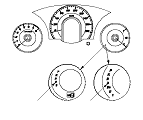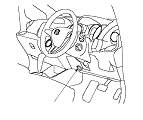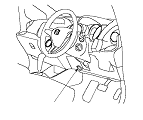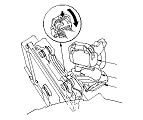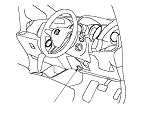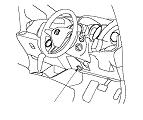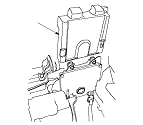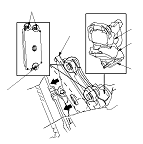How to Troubleshoot the A/T System
|
When the Honda Diagnostic System (HDS) is connected to the data link connector (DLC) (A) (located under the driver's dashboard lower cover), it will indicate the diagnostic trouble code (DTC) when the ignition switch is turned to ON (II) and the appropriate menu is selected.
If the D indicator or malfunction indicator lamp (MIL) has been reported on, or if a driveability problem is suspected, follow this procedure:
|
|
How to Troubleshoot Circuits at the PCM Connectors
NOTE: Monitoring the powertrain control system throughout the vehicle, the PCM stays on up to 60 minutes after the ignition switch is turned to LOCK (0). Jumping the SCS line after turning the ignition switch to LOCK (0) cancels this function. Disconnecting the PCM during this function, without jumping the SCS line first, can damage the PCM.
|
|
|
How to Clear A/T DTCs
|
|
Updating the A/T software in the PCM
Refer to the PCM Update
when the A/T software updating is needed in the DTC troubleshooting.
|
|
Replacing the PCM
Refer to the PCM Replacement
when replacing the PCM is needed in the DTC troubleshooting.
|
|
How to Substitute the PCM
|
|
|
